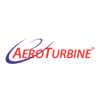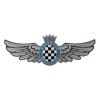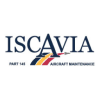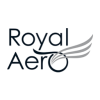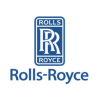Narrow Body Aircraft
A single aisle aircraft with a fuselage under 4 meters wide, primarily used for short to medium haul flights.
NARROW BODY AIRCRAFT
Narrow-body aircraft engines operate under high-cycle, medium haul conditions with repetitive thermal and mechanical stress.
Routine and event-driven borescope inspections ensure these engines maintain performance, efficiency, and compliance within tight operational turnaround windows.
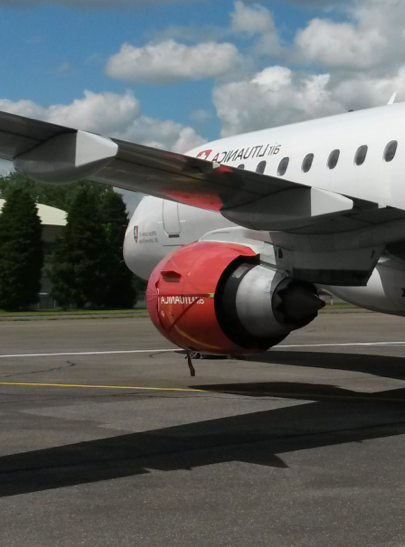
High-Cycle Wear Detection
Inspections focus on early-stage cracking, erosion, and seal wear due to frequent start-stop cycles and thermal cycling. Attention is given to compressor blades, turbine nozzles, and combustor hot spots where fatigue-related damage tends to develop first.
Model-Specific Protocols
Each engine type is inspected following OEM-specific guidelines, including port access, inspection angles, and damage limits. Findings are documented per the AMM/EMM, supporting accurate airworthiness decisions and alignment with on-condition maintenance strategies.
Quick-Turnaround for Line Maintenance
Inspections can be performed on-wing with minimal disruption, often during overnight layovers or short ground holds. Paired with portable digital borescopes, this ensures rapid defect identification without delaying flight schedules.
NARROW BODY AIRCRAFT
Inspection Scheduling & Fleet Integration
Narrow-body engine inspections are typically aligned with A-checks, post-incident evaluations (e.g., bird strikes, hard landings), or monitored conditions from engine health monitoring (EHM) systems.
These inspections are integral to maintaining dispatch reliability for high-utilization fleets such as A320neo, 737 MAX, and earlier NG series.
Findings feed into maintenance planning, lease agreements, and component life tracking, supporting lean operations and optimal time-on-wing performance.
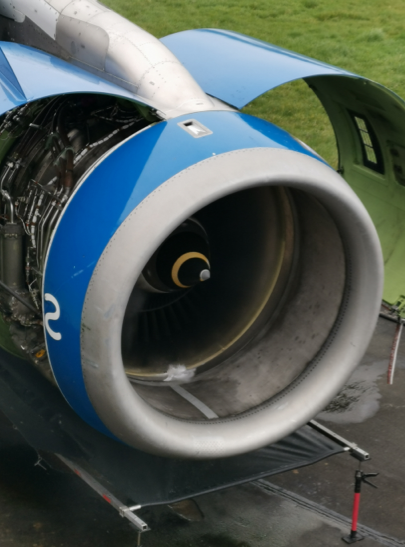
NARROW BODY AIRCRAFT
Narrow body aircraft are the backbone of short to medium-haul air travel, offering efficient performance on high frequency routes.
A318 - A321 CL Family
The Airbus A318 to A321 Classic Family comprises narrow body aircraft equipped with either CFM56 or V2500 engines. These engines feature high bypass dual spool turbofan architectures with single stage fans, multistage axial compressors, annular combustors, and high and low pressure turbines, optimised for short to medium haul operations and efficient performance across varying thrust classes.
A320 - A321 NEO Family
The Airbus A320 to A321 NEO Family features advanced narrow body aircraft powered by either LEAP 1A or PW1100G engines. These next generation engines incorporate high bypass ratios, dual spool designs, and advanced technologies such as geared fan architecture in the PW1100G and composite fan blades in the LEAP 1A, along with multistage axial compressors, annular combustors, and high efficiency turbine sections for improved fuel efficiency and reduced emissions.
B737CL, NG & MAX
The Boeing 737 Classic, Next Generation, and MAX families are equipped with CFM56 3, CFM56 7B, and LEAP 1B engines respectively. These engines feature high bypass dual spool turbofan designs with single stage fans, multistage axial compressors, annular combustors, and high and low pressure turbines, engineered to deliver reliable performance, improved fuel efficiency, and reduced noise across successive generations of the 737 platform.
B727
The Boeing 727 is powered by three JT8D low bypass turbofan engines featuring a single spool design, axial compressors, annular combustors, and axial flow turbines. These engines are optimised for short to medium range operations, providing robust performance and reliability for the trijet narrow body configuration.
B757
The Boeing 757 is powered by either the Rolls-Royce RB211-535 or Pratt & Whitney PW2000 engines, both featuring high bypass dual spool turbofan designs with multistage axial compressors, annular combustors, and high and low pressure turbines. These engines deliver high thrust and efficiency optimised for narrow body, medium to long range operations.
DC8 Family
The Douglas DC-8 family is powered by Pratt & Whitney JT8D low bypass turbofan engines featuring single spool axial compressors, annular combustors, and axial flow turbines. These engines are designed for medium to long range operations, delivering reliable thrust for early generation narrow body and widebody aircraft. DC-8 aircraft had CFM56-2 engines fitted at a later date.



